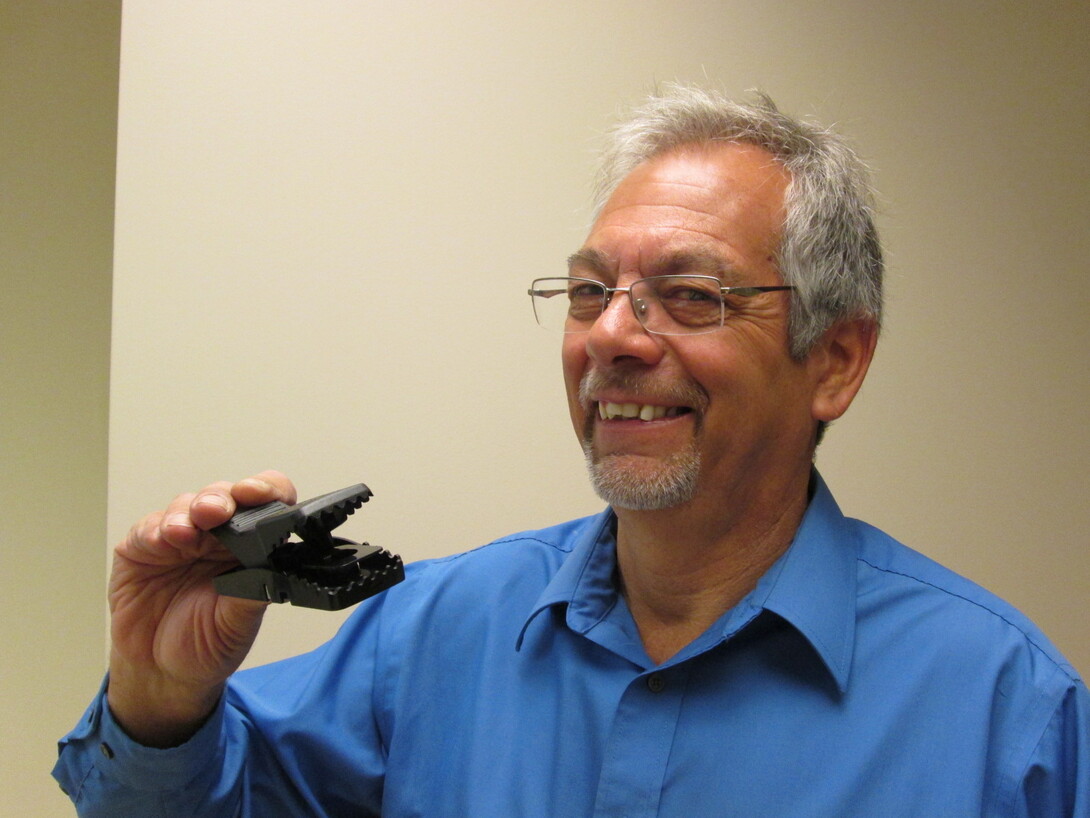
November 3, 2016
Lincoln, Neb. — How do you rid your residence of rodents? First, you have to know about their habits.
“If you know how rodents think about the environment, the better you can control them,” said Dennis Ferraro, Nebraska Extension wildlife specialist. The best control is to prevent their entry indoors.
An adult mouse, for example, can squeeze through an opening as small as 3/8 inch; their whiskers tell them whether the opening is large enough. Mice can run up to 6 miles per hour, jump straight up 2.5 feet, jump across 3 feet, and drop 8 feet and keep running. They can vertically climb brick and stucco, and walk the tight rope on 10-gauge wire, about one-tenth inch in diameter.
Within a year, all offspring and subsequent generations from a single pair of mice could add up to 10,000 mice in one year. They urinate and defecate on the go, as many as 80 droppings a day. The black, quarter-inch droppings are pointed on both ends and carry disease-causing organisms. Fleas and bacteria can spread from the mouse even if it is trapped or dead.
The home range of a house mouse is usually a 20-foot radius, though their curiosity can lead them to explore up to 200 feet from their home base. Their preferred path is along walls, whiskers guiding the way.
All this is helpful in trapping and controlling them, Ferraro said. In the science-based, decision-making Integrated Pest Management, sanitation and entry prevention top the list, especially as outdoor temperatures cool.
Those 3/8-inch spaces a mouse can squeeze through to get inside? Pack them with copper wool or stainless steel wool (make sure it is without iron, which will rust), then caulk over. That way, mice can’t chew through or pull out the material.
“Eliminate whatever it is they’re after, whether it’s food, water or nesting products,” Ferraro said. Clean up food and crumbs, and fix water leaks. Even simple things like storing a damp mop on the tip of its handle with its damp head in the air, can prevent mice from obtaining moisture or nest material.
Avoid using mouse poisons and trap them instead, Ferraro said. (See accompanying article.)
“Using baits indoors should be avoided at all costs,” Ferraro said. One reason is because children and pets often are unintentional victims. Plus, mice won’t go outside to die – they’re more apt to crawl into a wall where they can decompose for a month while shedding bacteria and attracting maggots.
When cleaning where mice have been or droppings are found, avoid sweeping and vacuuming. Disease-causing organisms in their droppings spread when airborne. Ensure the area being cleaned is well-ventilated. Wear a respirator or quality dust mask, and spray the area with a disinfectant before cleanup. The moisture in diluted bleach or disinfectant product prevents disease-causing organisms from becoming airborne and inhaled.
Ferraro addressed the IPM Coalition in Lincoln Oct. 18. Coalition members include representatives from schools, public health entities, tribes, and state and federal government.
For more information on trapping mice, visit http://lancaster.unl.edu/pest/resources/mousesanitation.shtml.
Cheryl Alberts
Pesticide Safety Education Program
402-472-1696
calberts1@unl.edu







